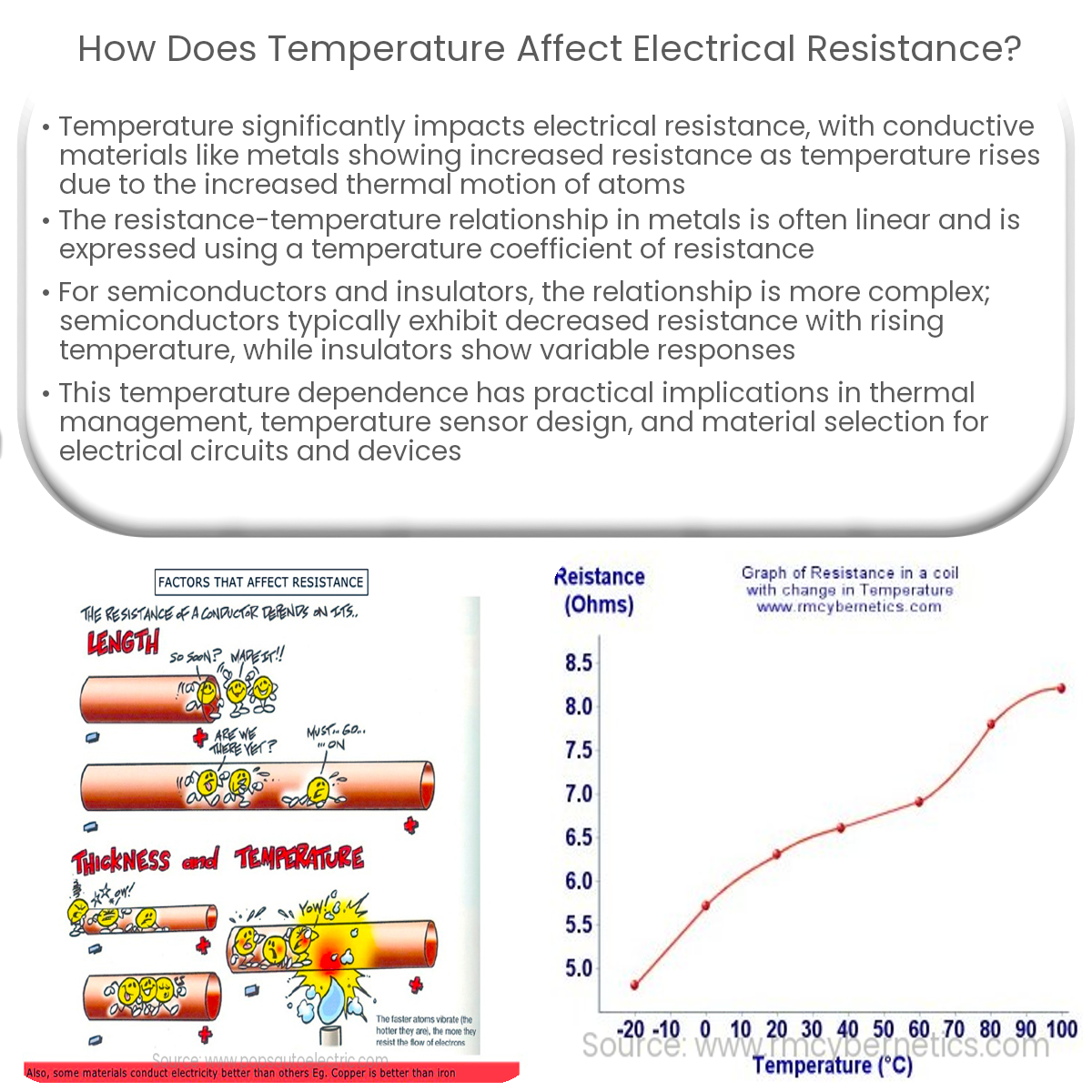Temperature affects electrical resistance by increasing it in metals and generally decreasing it in semiconductors, with insulators showing varied responses.
Temperature Effects on Electrical Resistance
Temperature has a significant impact on the electrical resistance of materials, influencing their ability to conduct electric current. Understanding how temperature affects resistance is crucial for designing and analyzing electrical circuits and devices, particularly those operating in extreme temperature conditions. This article discusses the relationship between temperature and electrical resistance in various materials.
Conductive Materials: Metals
In conductive materials like metals, electrical resistance typically increases with rising temperature. The primary reason for this behavior is the increased thermal motion of the atoms or ions in the material. As temperature rises, the atoms vibrate more vigorously, causing more frequent collisions with the electrons moving through the material. These collisions impede electron flow, resulting in increased resistance.
For many metals, the relationship between temperature and resistance is approximately linear over a certain temperature range. This relationship can be expressed using the temperature coefficient of resistance (α), a parameter that indicates the change in resistance per degree Celsius. The formula is given as:
RT = R0(1 + α(T – T0))
Where RT is the resistance at temperature T, R0 is the resistance at a reference temperature T0, and α is the temperature coefficient of resistance.
Semiconductors and Insulating Materials
For semiconductors and insulating materials, the relationship between temperature and resistance is more complex. In semiconductors, such as silicon and germanium, resistance typically decreases with increasing temperature. This occurs because higher temperatures provide more thermal energy to the semiconductor, which frees up additional charge carriers (electrons and holes) and enhances their mobility, ultimately reducing resistance.
For insulating materials, the effect of temperature on resistance varies significantly depending on the material composition and structure. Some insulators exhibit increased resistance with rising temperature, while others show a decrease in resistance.
Practical Implications
The temperature dependence of electrical resistance has several practical implications:
- Thermal management: Temperature variations can impact the performance and reliability of electrical circuits and devices. Effective thermal management techniques are essential to minimize temperature-induced resistance changes.
- Temperature sensors: The relationship between temperature and resistance can be exploited to develop temperature sensors, such as resistance temperature detectors (RTDs) and thermistors.
- Material selection: Understanding the temperature dependence of resistance is crucial for selecting appropriate materials for electrical circuits and devices operating under specific temperature conditions.
In conclusion, temperature has a significant effect on the electrical resistance of materials, with conductive materials typically exhibiting increased resistance at higher temperatures and semiconductors showing reduced resistance. Understanding this relationship is crucial for designing and analyzing electrical circuits and devices, as well as selecting appropriate materials for specific applications.


